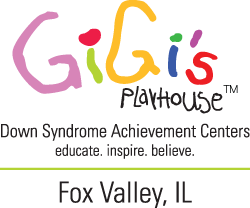A Solutions Orientated Approach to E-Learning
A SOLUTIONS ORIENTED APPROACH TO E-LEARNING FOR SPECIAL EDUCATION STUDENTS
A Solutions Oriented Approach to E-Learning for Special Education Students
Here are some creative ways families and IEP teams are making remote/distance learning plans more appropriate and effective!
*Please note each of the following suggestions may or may not be appropriate for each student’s home setting and are based on each student’s unique needs that are substantiated by data.
- Family receives reimbursement from district for student to attend in-person therapy at an open private therapy center during remote learning
- Implement reward systems at home with the help of the IEP team
- Give student choice of how to spend rewards and breaks within schedule
- Use visual schedule and adapt to home use to facilitate more independence, while creating structure and a consistent daily routine to follow at home
- Create a calendar and daily visual schedule that includes a balance of work, play, and movement opportunities
- Utilize social stories for expectations for virtual learning, understanding Covid, handwashing, wearing masks in public, and for other applicable skills for the times
- Additional online social emotional learning lessons about managing fear and anxiety in uncertain times
- Use visual timers, alarms, and task boxes to increase attending stamina
- During virtual lessons, provide hands-on learning opportunities utilizing everyday objects from around the house
- Schedule one-on-one virtual check-ins with teachers and therapists outside of large group virtual lessons
- Mix preferred virtual activities with non-preferred virtual activities through the use of first/then phrased as “First (non-preferred activity), then (preferred activity)”.
- Individualize and incorporate student interests in lessons, while building off of their strengths
- Accommodation ideas for virtual lessons online: use of large fonts, high contrast lighting, and closed captioning
- Give the student choices of what work they want to complete
- Provide extended due dates and chunk assignments into manageable steps for students with attending delays, especially when sitting in front of a screen
- Send home AAC devices (augmentative and alternative communication devices) and other needed support tools (i.e.: sensory fidgets or toolkit, exercise band on chair, or use of a move-n-sit cushion to increase attending while in front of screen)
- Provide peer modeling of skills in the form of peer video modeling
- Create a dedicated home learning space that is free of distractions
- Use of brain breaks during virtual lessons and digital assignments
- Provide options for turning in assignments: email, picture texts, paper copy
- Use of web blockers to block out internet/apps/games to increase productivity and reduce distractions
- Use of a tri-fold display board to create a private workspace in the home to reduce distractions
- Teachers/therapists to implement consult minutes for virtual communication with parents to help facilitate behavior management or other skills at home
- Use of white noise machine, calming background music or noise reduction headphones in busy households, and the use of blue light blocking glasses when in front of screen
- Focus on goal skill areas that are more applicable to the home environment such as self-help skills, independent living skills, communicating needs/wants/feelings, executive functioning skills, etc
 Details about your child’s remote learning plan should be included in an addendum to the IEP, with a date at which it will be reviewed again. An IEP meeting is not always necessary in order to make a change to the plan at any time if something is not working and/or needs to be further individualized.
Details about your child’s remote learning plan should be included in an addendum to the IEP, with a date at which it will be reviewed again. An IEP meeting is not always necessary in order to make a change to the plan at any time if something is not working and/or needs to be further individualized.
Written by: Carly Quinlan, IEP Consultant & Advocate with IEP Consulting, LLC
Recent Posts



